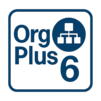
This course provides an in-depth exploration of integrating Python with Vector CANoe for automotive testing and simulation. Participants will learn how to establish communication between Python and CANoe, automate testing procedures, manipulate simulation parameters in real time, and analyze test data. The training includes hands-on exercises to build practical skills in scripting, debugging, and optimizing Python scripts that interact with CANoe, enhancing capabilities in automated testing and data-driven decision-making.
Control Canoe with Python Interview Questions Answers - For Intermediate
1. What is the purpose of using Python with Vector CANoe?
Python is used with Vector CANoe to automate repetitive tasks, extend testing capabilities, and enable more complex test scenarios. Python scripts can interact with CANoe simulation environments to control the simulation, analyze data, and generate reports.
2. How do you set up a connection between Python and CANoe?
A connection between Python and CANoe can be established using the win32com. client library in Python, which allows Python scripts to communicate with CANoe as a COM server.
3. What is a CAPL function, and how can it be triggered from Python?
CAPL (CAN Access Programming Language) is a proprietary scripting language used in Vector CANoe and Vector CANalyzer for automation tasks. CAPL functions can be triggered from Python by invoking these functions through the COM interface, effectively allowing Python to execute CAPL code embedded in the CANoe environment.
4. Describe how you would automate a test case in CANoe using Python.
To automate a test case in CANoe using Python, you would:
- Establish a connection to CANoe using win32com.client.
- Load a CANoe configuration file.
- Start the simulation.
- Monitor specific network variables or events.
- Log data or make decisions based on the data received.
- Stop the simulation and save the results.
5. How can you handle errors in a Python script when interacting with CANoe?
Error handling can be implemented using try-except blocks in Python to catch exceptions related to COM operations. Logging functionalities should be incorporated to record the nature of the errors and the state of the application when they occur.
6. What are network variables in CANoe, and how are they accessed via Python?
Network variables are data entities in CANoe used to exchange information between different simulation nodes or with external applications. These variables can be accessed and manipulated from Python using the COM interface, allowing Python scripts to read or write these variables.
7. Can you describe how to simulate message traffic on a CAN network using Python scripts?
Message traffic on a CAN network can be simulated by sending CAN messages using Python scripts that interact with CANoe's COM server to invoke message transmission functions, control timing, and modify message contents dynamically.
8. Explain how you would use Python to analyze data logged by CANoe.
Python can be used to analyze data by first exporting the data from CANoe into a format that Python can read (e.g., CSV, XML). Python's powerful data analysis libraries like pandas and numpy can then be used to perform statistical analysis, data cleansing, and visualization.
9. How do you ensure synchronization between Python scripts and CANoe simulation?
Synchronization can be ensured by using event handling in Python to respond to simulation events in CANoe, and by employing timing functions in Python that align with simulation time or states.
10. What is a simulation setup in CANoe, and how is it controlled via Python?
A simulation setup in CANoe defines the configuration of the simulation environment, including ECUs, networks, and test cases. It is controlled via Python by using the COM interface to load configuration files, start/stop the simulation, and modify parameters during runtime.
11. Discuss the role of environment variables in CANoe and their manipulation through Python.
Environment variables in CANoe are used to define and store data that can be shared across different parts of a simulation. Python can manipulate these variables through the COM interface to dynamically control simulation behavior based on script logic.
12. How can Python scripts interact with CANoe to perform system diagnostics?
Python scripts can interact with CANoe to perform diagnostics by sending diagnostic requests and processing the responses. This interaction can be automated via Python to perform systematic diagnostics across a range of conditions and scenarios.
13. What libraries or tools would you recommend for enhancing Python and CANoe integration?
Libraries such as pywin32 for COM communication, pandas for data manipulation, and matplotlib for data visualization enhance Python's integration with CANoe by providing robust tools for automation, data handling, and analysis.
14. How would you automate the generation of reports from CANoe tests using Python?
Reports can be automated by parsing test result data exported from CANoe, analyzing it with Python, and using libraries like ReportLab or matplotlib to generate PDFs or graphical reports.
15. Describe a scenario where Python would be essential for extending the capabilities of CANoe.
Python would be essential in scenarios where complex data analysis is needed beyond the capabilities of CAPL, such as applying machine learning models to predict system behavior based on historical test data or integrating with other applications like databases or web services for enhanced testing capabilities.
Control Canoe with Python Interview Questions Answers - For Advanced
1. How does Python interface with Vector CANoe for real-time data manipulation?
Python interfaces with CANoe using the COM automation server, allowing real-time interaction with running simulations. Python scripts can directly manipulate data streams by reading and writing network variables or sending simulated signals and messages via the CANoe API. This allows for dynamic adjustments to simulations based on real-time data analysis or external inputs processed through Python, significantly enhancing test automation capabilities.
2. What mechanisms are available in Python to handle the asynchronous events from CANoe?
Python can handle asynchronous events from CANoe by setting up event handlers through the win32com.client.DispatchWithEvents method, which listens to specific CANoe events. Python scripts can define callback functions to respond to these events, such as changes in variable values or diagnostic messages, enabling reactive automation strategies that adapt to the simulation state dynamically.
3. Explain the process of integrating Python with CAPL and the advantages of such integration.
Integrating Python with CAPL involves using Python scripts to execute CAPL functions through the COM interface. This integration allows leveraging Python's extensive libraries and capabilities—such as complex data analysis, machine learning, and internet connectivity—to enhance the functionality of CAPL scripts within CANoe. It bridges the gap between CAPL's domain-specific features and Python's general-purpose programming strengths, offering a powerful toolset for advanced automotive testing.
4. Describe a method to use Python for automated regression testing in CANoe.
Automated regression testing in CANoe using Python can be set up by scripting test cases in Python that configure the CANoe simulation environment, run the tests, and compare the results with expected outcomes. Python's unittest framework can be utilized to structure these tests, providing a robust method for performing repetitive tests efficiently. Results can be logged and compared using Python’s assert methods or more sophisticated statistical analysis to detect any deviations from expected behavior, enabling developers to quickly identify and address regressions.
5. How can Python scripts dynamically modify CANoe simulation parameters during runtime?
Python can modify simulation parameters dynamically by interacting with CANoe’s simulation environment through the COM API. This includes changing the values of environment variables, adjusting simulation timing, and controlling the flow of messages. This dynamic modification capability is critical for adaptive testing scenarios where conditions are altered based on real-time data or during stress testing where system behavior under varied configurations is evaluated.
6. Discuss the implementation of continuous integration systems using Python and CANoe.
Python can be used to integrate CANoe into a continuous integration (CI) system by automating the setup, execution, and teardown of CANoe simulations in response to repository triggers. Python scripts can be called from CI tools like Jenkins or GitHub Actions, to control CANoe simulations, ensuring that every software check-in is validated against automotive network standards. This integration is vital for DevOps in automotive software development, ensuring that changes are continuously tested against real-world scenarios.
7. What are the best practices for error handling and debugging when using Python with CANoe?
Best practices for error handling when using Python with CANoe include extensive use of try-except blocks to catch and log exceptions specifically related to COM interactions. Debugging can be enhanced by logging detailed error messages and maintaining a consistent state within the simulation for reproducibility. It's also advisable to use Python's debugging tools, like pdb or PyCharm’s debugger, to step through the code and monitor the state of the Python-CANoe interface dynamically.
8. How do you optimize the performance of Python scripts that interact heavily with CANoe?
The performance of Python scripts can be optimized by minimizing the COM calls, caching frequently accessed data, using efficient data structures like arrays or pandas DataFrames, and running performance-critical code segments in native Python environments instead of through the COM interface. Additionally, asynchronous programming techniques such as threading or asyncio can be employed to handle non-blocking operations more efficiently.
9. Explain the use of Python for custom data visualization from CANoe simulations.
Python can be employed to create custom data visualizations from CANoe simulations by extracting simulation data through the COM interface and using libraries like matplotlib, seaborn, or Plotly to generate graphs and charts. This is particularly useful for analyzing trends over time, comparing behaviors under different test conditions, or presenting data in an interactive format for stakeholder reviews.
10. How can Python be used to implement machine learning algorithms on data collected from CANoe?
Python can implement machine learning algorithms on data collected from CANoe by first extracting relevant data through the CANoe COM interface and preprocessing it using libraries like scikit-learn or pandas. Machine learning models can then be trained on this data to predict system behaviors, detect anomalies, or optimize performance parameters. These models can be integrated back into the CANoe simulation to create intelligent, adaptive testing environments.
11. Describe the steps to configure a distributed testing environment using Python and CANoe.
Configuring a distributed testing environment involves setting up multiple CANoe instances on different machines or virtual environments and controlling them through centralized Python scripts. These scripts would manage the synchronization of tests, collation of results, and potentially the aggregation of data across instances. Network communication libraries in Python, such as socket or ZeroMQ, can be used to facilitate inter-process communication.
12. What role does Python play in generating synthetic datasets for CANoe simulations?
Python can generate synthetic datasets for CANoe simulations by simulating network traffic, sensor data, or ECU responses that might be hard to collect in real-world tests. Libraries like numpy or scipy can be used to generate data following specific statistical distributions or patterns, which can be fed into CANoe simulations to test how the system responds to diverse data inputs under controlled conditions.
13. How can Python be leveraged to enhance automated testing coverage in CANoe?
Python can enhance automated testing coverage in CANoe by scripting complex test scenarios that are difficult to implement in CAPL alone. These might include generating random or edge case test data, setting up intricate network conditions, or integrating with other software tools and APIs to create a more comprehensive testing environment that covers a wider range of scenarios and potential issues.
14. Discuss the security aspects of integrating Python with CANoe, especially in an enterprise environment.
Security aspects include ensuring that the Python scripts and the CANoe environment are protected from unauthorized access and execution. This involves securing the interfaces, using encryption for sensitive data, and maintaining rigorous access controls and logging to detect and mitigate potential security threats. Security considerations are crucial in automotive environments where safety and reliability are paramount.
15. Explain how Python can be used to simulate different protocols in CANoe for network testing.
Python can simulate different protocols by interfacing with CANoe’s protocol-specific APIs to send and receive messages according to the rules of each protocol, such as CAN, LIN, or Ethernet. This allows testers to create highly customized test scenarios for protocol compliance, error handling, and performance testing under a variety of network conditions and traffic loads.
Course Schedule
| Nov, 2025 | Weekdays | Mon-Fri | Enquire Now |
| Weekend | Sat-Sun | Enquire Now | |
| Dec, 2025 | Weekdays | Mon-Fri | Enquire Now |
| Weekend | Sat-Sun | Enquire Now |
Related Courses
Related Articles
- Understanding Apache Cassandra: A Reliable NoSQL Database for Enterprises
- Why Autodesk Advance Steel is the Future of Structural Fabrication
- Build a Rewarding Career in SP3D Software Administration
- Exploring the Latest Features and Updates in SAP ARIBA- What Procurement Professionals Need to Know?
- Understanding the Benefits of SmartPlant P&ID for Process Plant Design
Related Interview
- IBM Maximo Training Interview Questions Answers
- AZ-305: Designing Microsoft Azure Infrastructure Solutions Interview Questions Answers
- Automation Anywhere Solution Architect Training Interview Questions Answers
- Piping Design and Drafting Interview Questions Answers
- Bentley OpenRoads Software Designer Interview Questions Answers
Related FAQ's
- Instructor-led Live Online Interactive Training
- Project Based Customized Learning
- Fast Track Training Program
- Self-paced learning
- In one-on-one training, you have the flexibility to choose the days, timings, and duration according to your preferences.
- We create a personalized training calendar based on your chosen schedule.
- Complete Live Online Interactive Training of the Course
- After Training Recorded Videos
- Session-wise Learning Material and notes for lifetime
- Practical & Assignments exercises
- Global Course Completion Certificate
- 24x7 after Training Support














 Join our Live Instructor-Led online classes delivered by industry experts
Join our Live Instructor-Led online classes delivered by industry experts